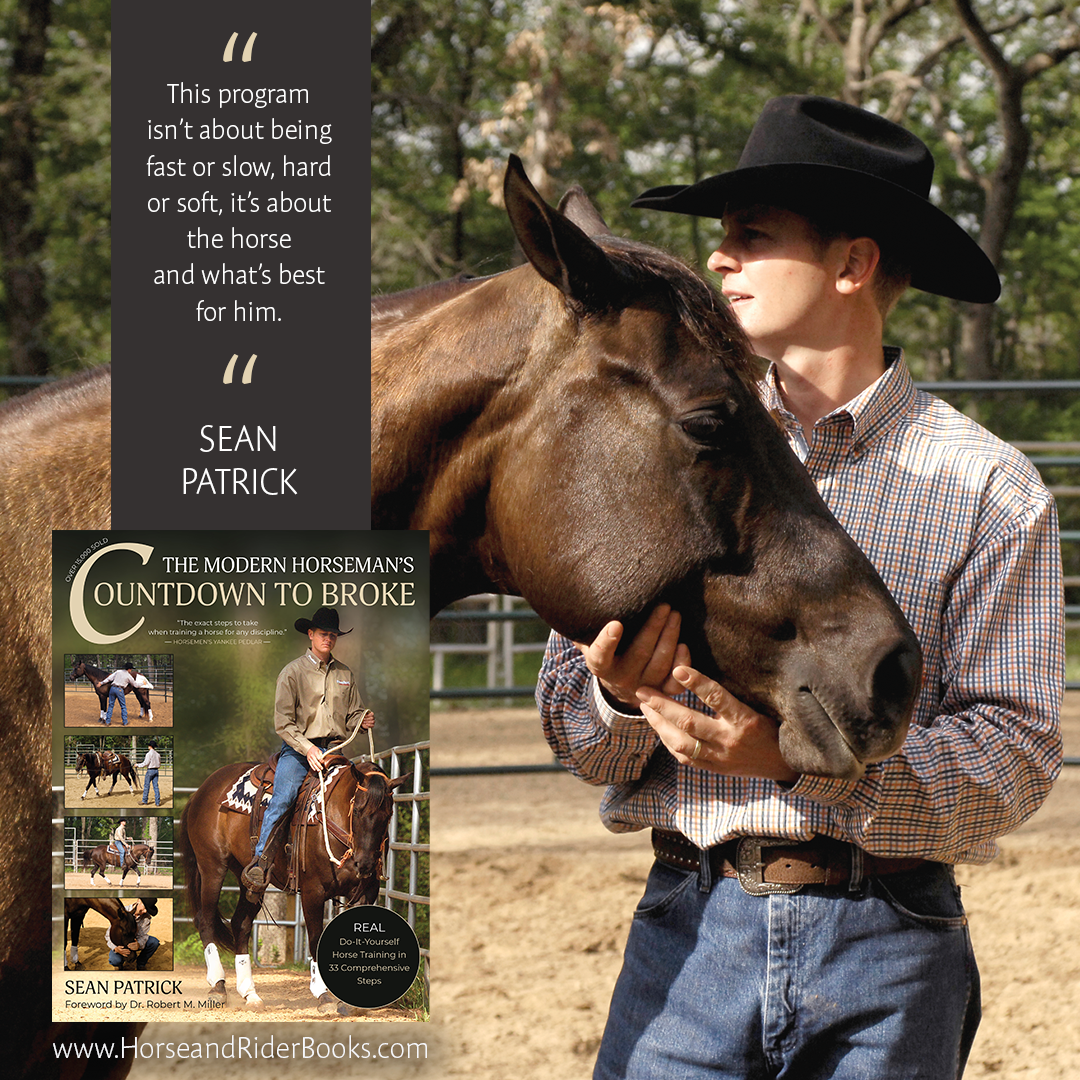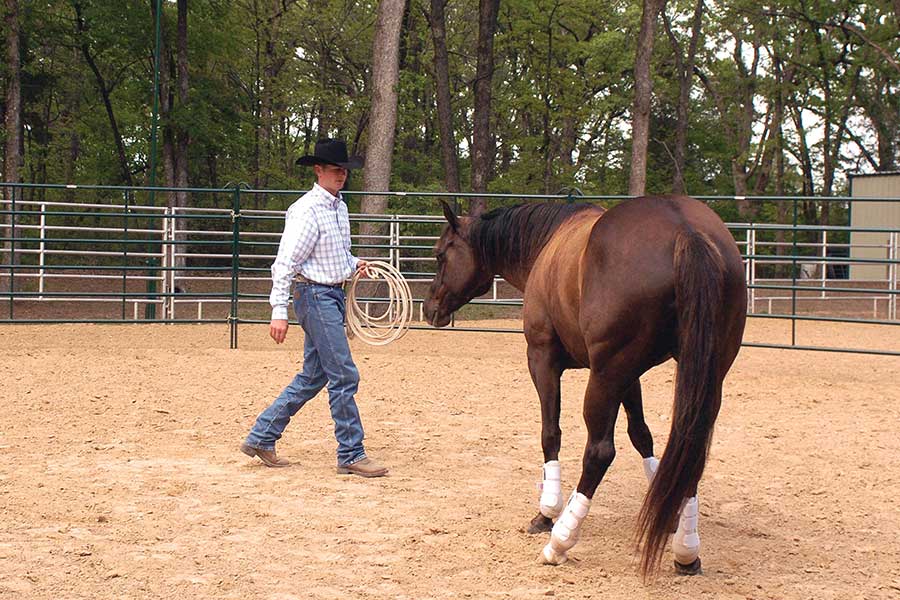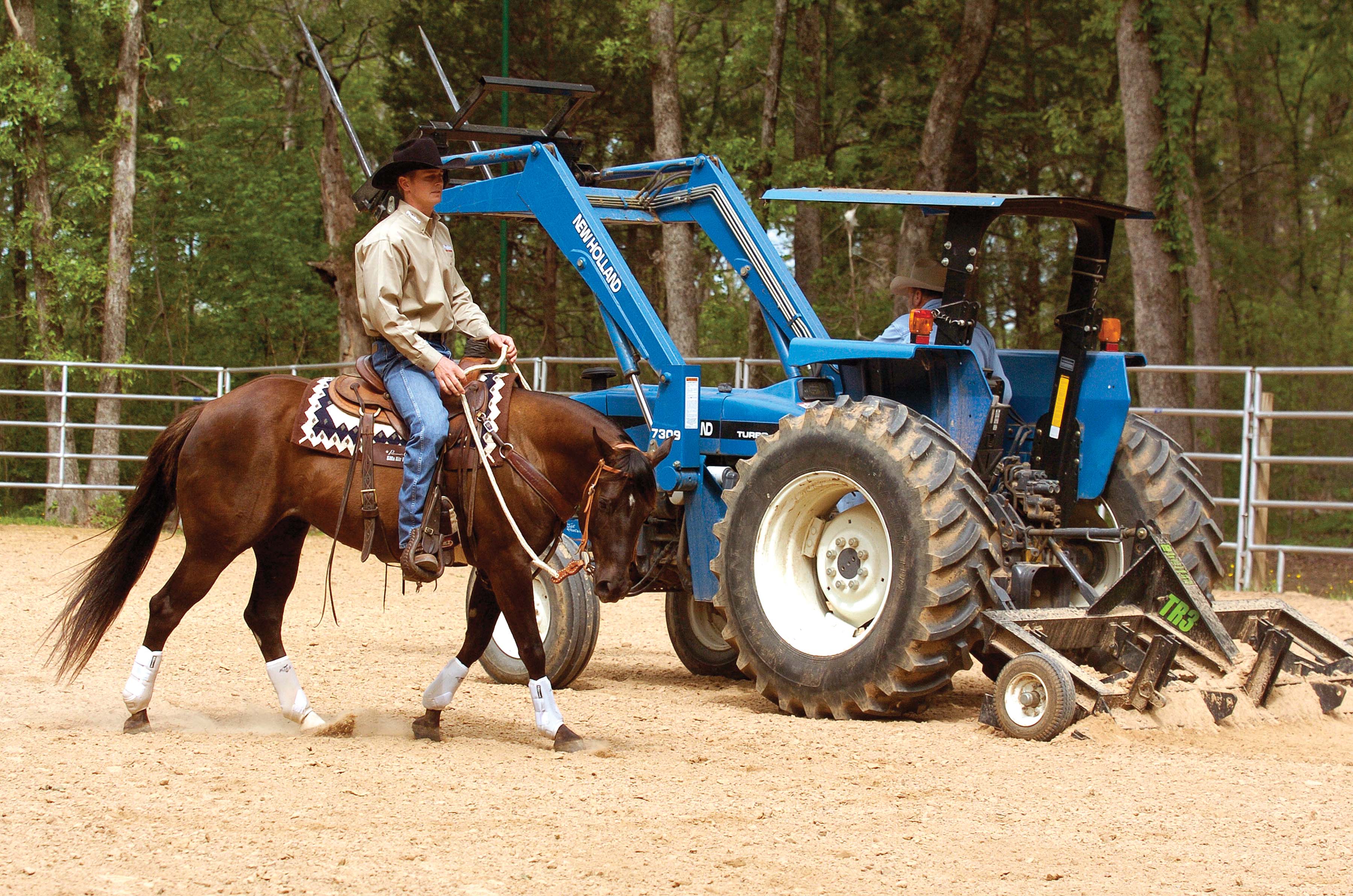
By Sean Patrick
Helping Your Horse Overcome His Fears
Horses usually take the path of least resistance and conserve their energy…a nice way of saying that they are inherently lazy. So why does a young horse surge in speed under saddle when a slower pace would take less effort? The answer can be explained by examining the horse’s fear level. He needs to build confidence through experience and habituation. Building your horse’s confidence is not just about desensitizing him to a saddle pad; it is an ongoing process every time you handle him or get in the saddle.
Expect your horse to be fearful of new experiences. Your job is to assist him in overcoming his fear. Here is a list of measures you can take:
- Use your hands and legs wisely. Your horse must completely trust your actions and intentions. Communicate through physical touch that is fair and pleasing.
- Apply motivators consistently and fairly—smoothly and with warning. For example, when using a dressage whip, take your position and begin hind-end tapping slowly with increasing firmness. Never startle your horse with an unexpected firm tap. With fair application he’ll learn to respond without ever showing signs of fear.
- Be reasonable and consistent with reprimands. Your horse needs to know where the line is, and that the line is stationary.
- Spend ample time in the saddle on a regular basis. This keeps your horse prepared and accustomed to his job as a riding horse. When your riding time is short and infrequent, he won’t progress nearly as well. You want the saddle and rider to be a normal part of his routine, where fear and discomfort are not factors.
- Work your horse regularly in all three gaits. He feels the rider quite differently in each gait and is not always as confident, say, in the jog or lope. Make sure that you jog and lope daily, thereby allowing him to be comfortable responding to your cues at the faster speeds.
- When your horse becomes excited, take the time to work him through it. The more “scary situations” he “survives” in a relaxed manner, the more confident he will be.
- Purposely expose your horse to new environments and stimuli. I am always looking for ways to show my horse a new sight—whether on my own property, or even better, elsewhere.
- Be a kind and trustworthy leader. Your horse is looking to you for guidance. Prove that there is nothing to fear and that being with you is safe.

Habituation
Since your horse is a “prey” animal, his first reaction to a new, possibly scary item or situation—such as a saddle blanket or even you approaching him—is to run away. In the wild, this is what keeps him alive. He does not wait around to see if his fear was justified.
Your job is to prove to your horse that his fears are unjustified. These fears may not always make sense to you, as the horse sees the world quite differently. However, with a thoughtful approach, you can build your horse’s confidence so that you can interact more safely and move ahead with training. Habituation occurs when you expose your horse to items or situations that scare him, and help him grow comfortable with them. This is an integral part of a horse’s education. If you don’t deal with many fear issues early on, your horse may be, or become, unmanageable.
When a horse “runs” from an alarming situation and “escapes,” he “burns” a memory—and so he is even more sensitive to a similar incident in the future. However, when he encounters something that scares him but cannot completely escape—as when in the confines of a round pen—the process of habituation can be started.
There are three things to keep in mind during this process:
- First, give your horse a more powerful reason to “keep his feet still” and stay with you, rather than run away. In the early lessons of my training Countdown, you will use hard work as a motivator when teaching your horse to remain still and face you. As this response strengthens and your horse learns that it is much easier to stand with you than work around the pen, he will be more inclined to keep his fear in check. He will also come to recognize that standing with you is a “safe place.”
- Second, conduct yourself as a leader without acting in predatory fashion. Predators stalk and do not back away. You need to establish a positive presence with your horse whereby you continue your role as leader, while proving to him that he need not feel threatened. By advancing toward your horse, followed by retreating, this realization occurs. When you only advance (and so act in a predatory way), your horse will want to flee.
- Third, introduce new items and situations slowly, and begin with short “exposures” that are easy for your horse to accept. Start with your bare hands, and then once you can touch your horse all over, move on to more frightening things, such as garbage bags, saddle pads, ropes, and other everyday items. You can gauge your horse’s level of fear by whether or not he moves. If his feet remain still, you can expose him to a “scary” item with increasing intensity, although always paired with periodic retreats. For example, perhaps a garbage bag begins as a small ball of plastic in your hand, which you rub on the horse’s shoulder, and the bag is gradually opened a little more after each retreat. The end goal is to rub a fully opened bag all over the horse’s body. If the horse’s feet move at any time during the process, you will know that you have overdone it.
Once you start working to habituate your horse to an item or situation, it is imperative that you finish the lesson. If you expose your horse to a garbage bag, for example, and stop before your horse has accepted it, his fear may actually become heightened. This also commonly happens with normal daily practices, such as fly-spraying or bathing. So, never ignore a fear issue. Take the necessary time to work through the concern and maximize every training opportunity. Repeat the habituation process until your horse is not showing any signs of fear—flinching, head tossing, or tail swishing. You want your horse to be completely relaxed and accepting.
This excerpt from The Modern Horseman’s Countdown to Broke by Sean Patrick is reprinted with permission from Trafalgar Square Books (www.HorseandRiderBooks.com).
There a more interesting articles in our section on Health & Education.


































